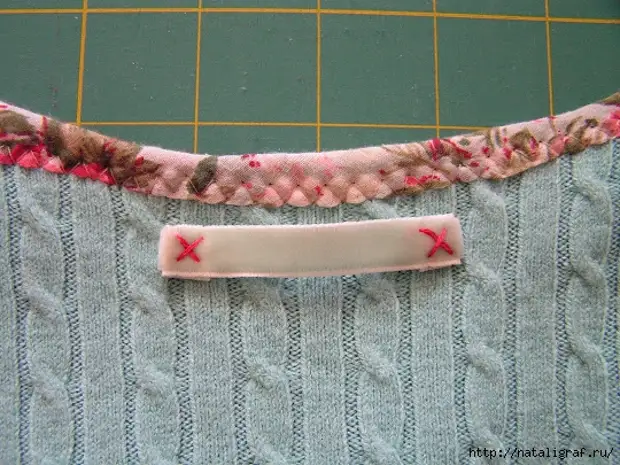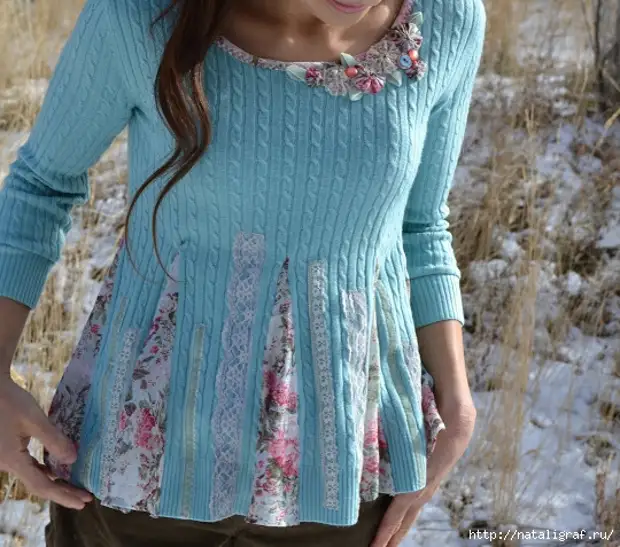Another idea of the author already familiar to us. It is necessary to recognize the courage and the audacity of the girl: its experiments are successful, and ideas are worthy to recognize them. Young and slender can make themselves such a thing and easily condone in it anywhere. To women, adults offer this idea to embody in cottage or home clothing. Outdoor, picturesque and very much to the place. Agree, not so many places where we can afford such frivolism))) moreover, they will become a kind of experiment of design or modeling. Such alteration will easily hide the tummy and folding on the back. The main thing is not to overdo the wedge of the wedge
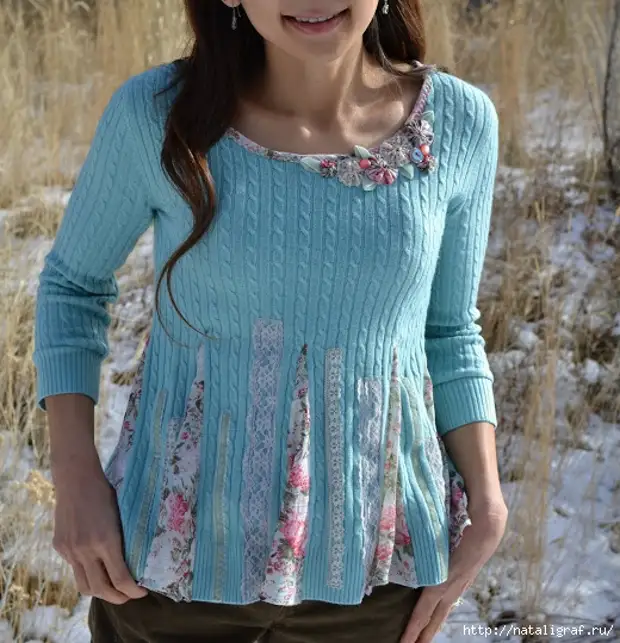
About choosing fabric for inserts, chief: I think that inserts should be from very thin knitwear. Or silk, suitable for tone. Simply, if the inserts are stitching, and not to rip, then instead of cute dressing, it may turn out to be deployed for drying an umbrella.
So, for alterations we collect a sweater, fabric, lace, tapes, buttons - everything that can come in handy or perhaps it is useful.
Decide with the height of inserts, that is, from where we will do. Two versions of the author: a) just below the chest, b) a few centimeters below the chest. My option: just above the waist line. It is - to make a bath. But it will only come true if the sweater is originally sits on the figure well (does not emphasize the folds on the back), but only tightens the tummy. It will also be required to the belt, seized in cuts, clamping the back and side parts of the transfer, for silhouette.
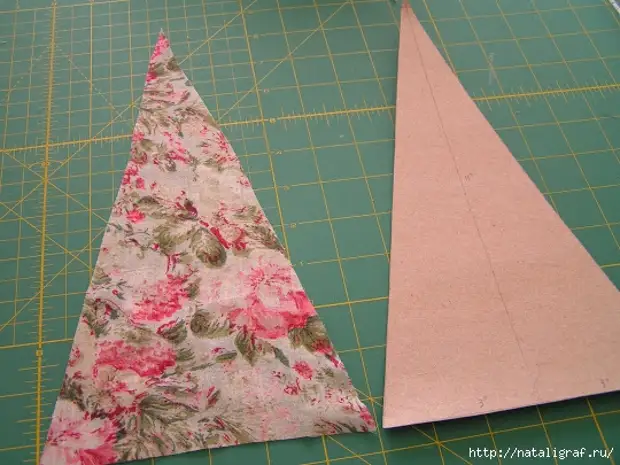
2. For a triangle, it is better to make a pattern of cardboard paper. I know, the habit of cutting, referring to the right one, often brings. We need 8 triangles of fabric. The size of the base of the triangle depends on how long the sweater is. Want a sewer sweater, make the basis wider.
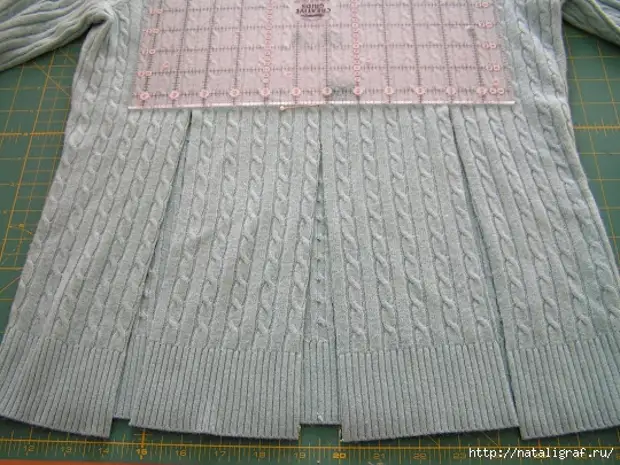
3. We begin with cuts, the optimal number 8: the proportional number of inserts does not bother the figure. We cut it: in the center of the transfer and back, on both sides of the center and on the sides. Cuts are obtained (ideally) centimeters after 14 from each other. But each sweater will have its intervals. You need to measure the width and take into account. Constant - incision in the middle and sides, from them and consider the distance for others. It is important that the distances be equal and balanced.
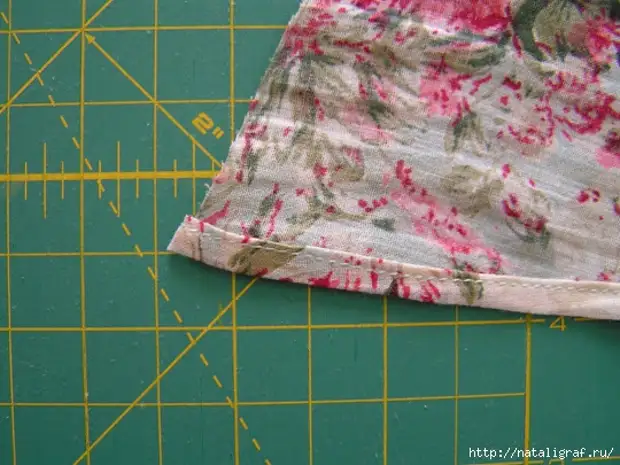
4. Sew wedges on the bottom, fold with the sweater.
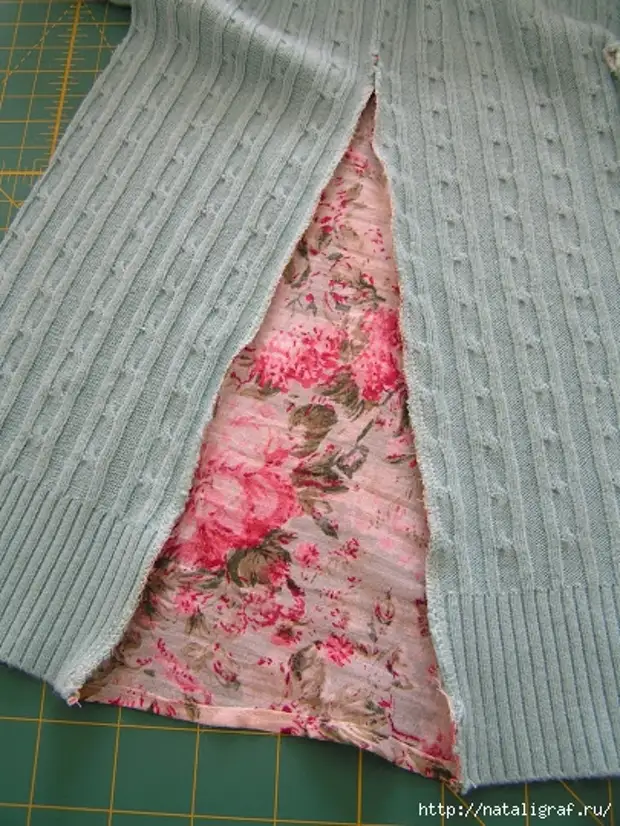
5. Sew wedges. Process seams.
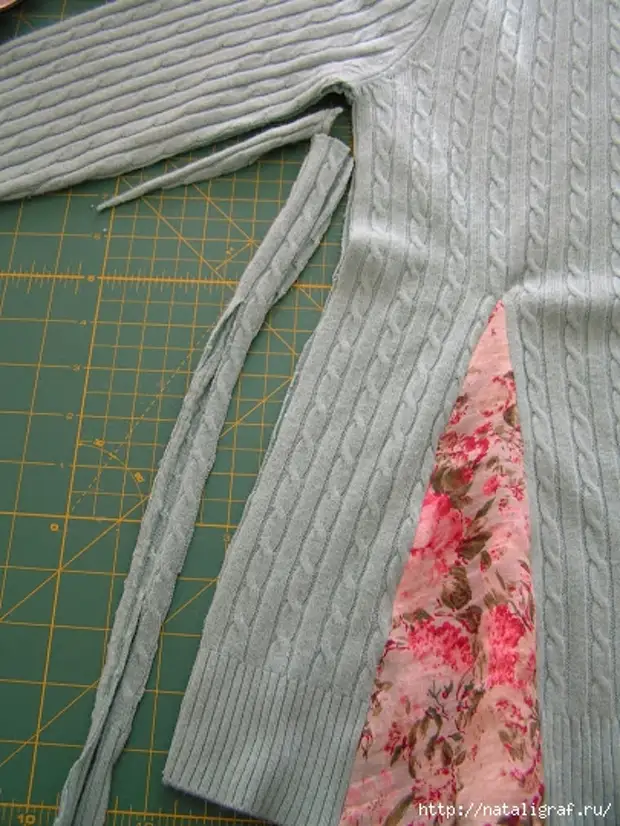
6. A completely wide sweater can be trimmed from sides. Immediately the sleeves can be done.
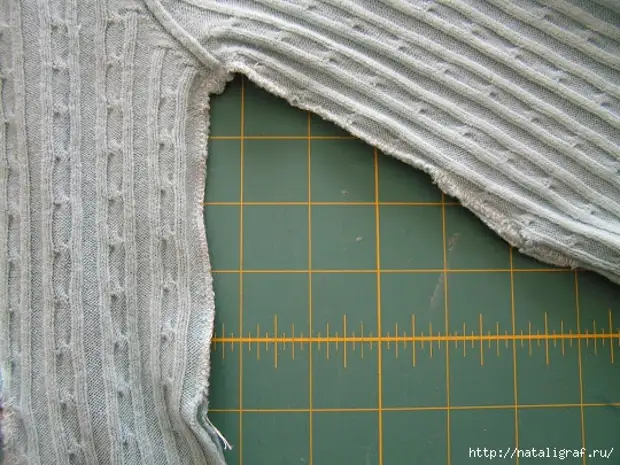
7. Stitch gently, watch the vertex of the wedge is neat.
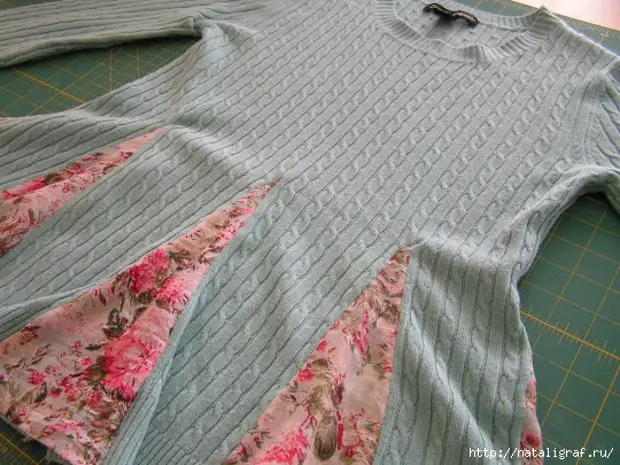
8. We change the cutout at the sweater - cut out the neck.
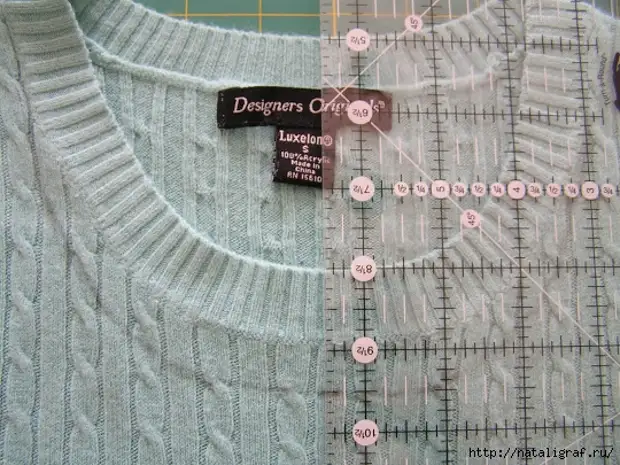
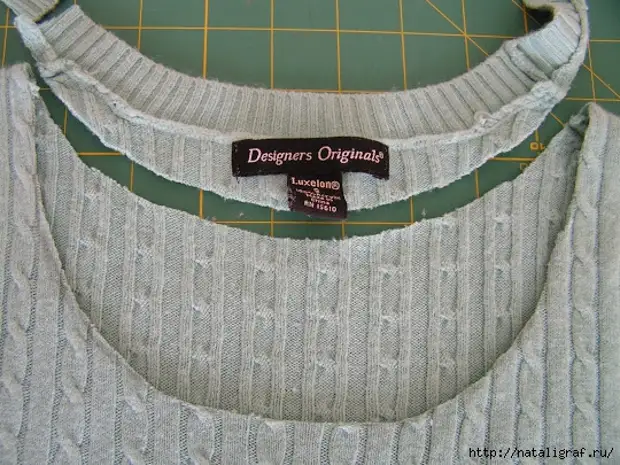
9. We are wearing a cutout oblique ribbon from the same tissue that wedges, sew a zigzag line.
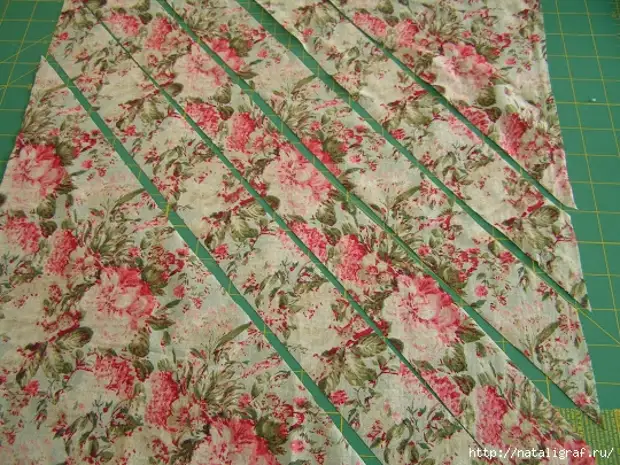
10. Go to decoration. Pin the lace, ribbons and so on, trying on. In order not to make a mistake with a lace length, cut a little more. We admire. Like - sew.
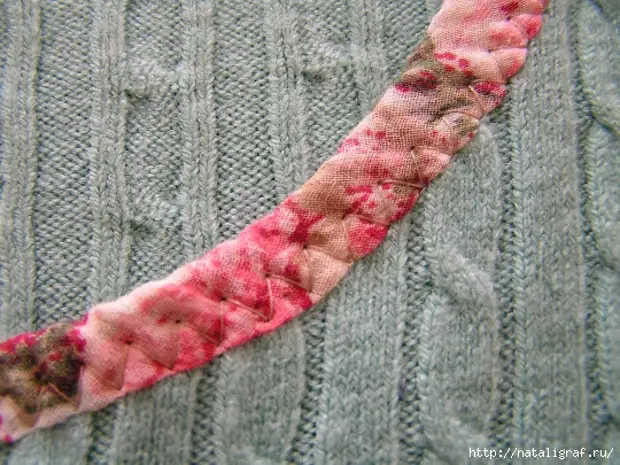
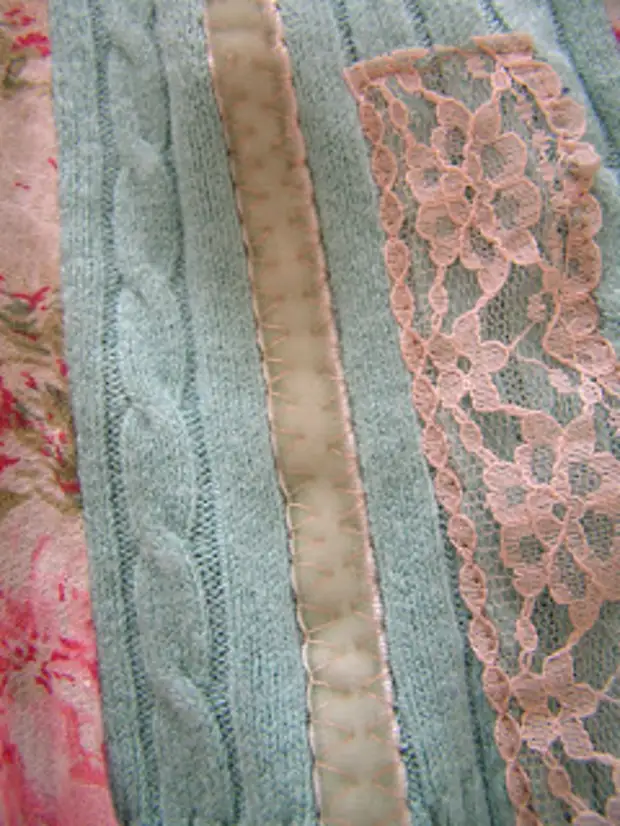
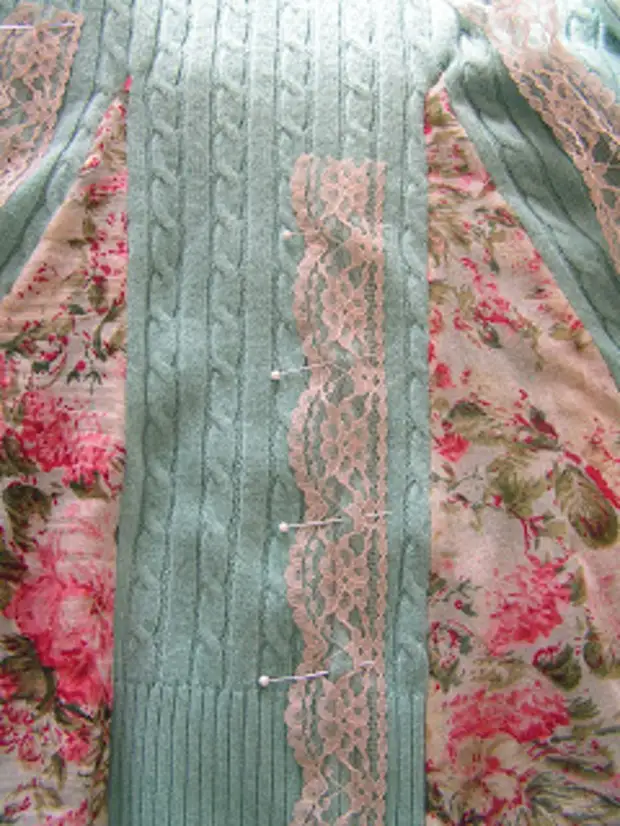
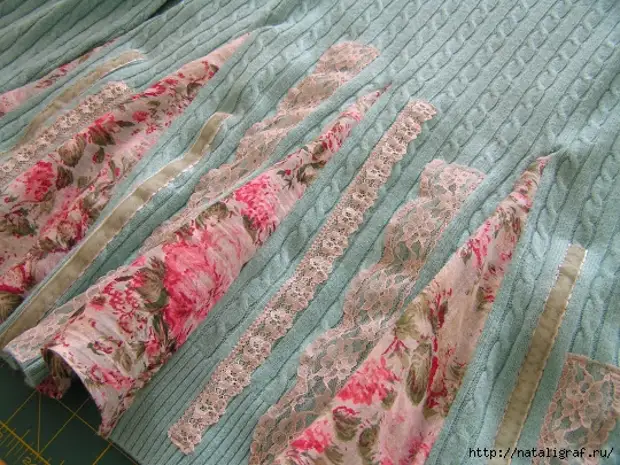
By the way, a very good solution for shortening the sleeves: cut out more from the middle.
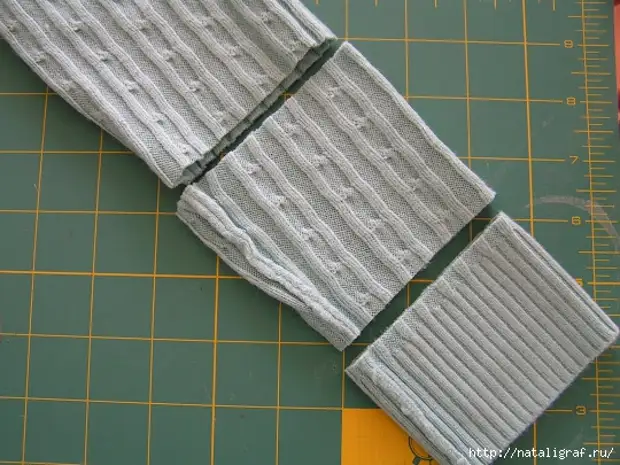
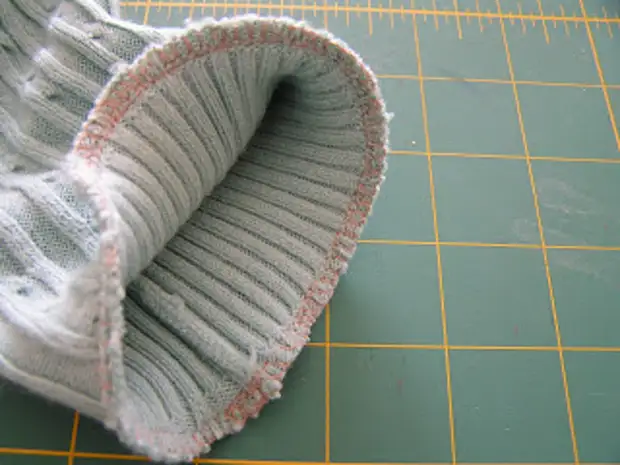
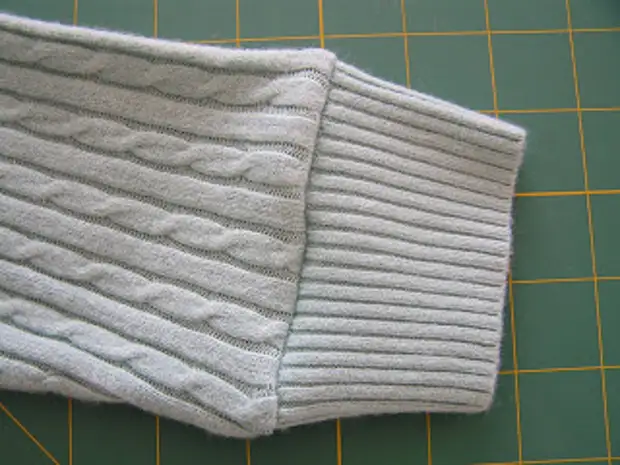
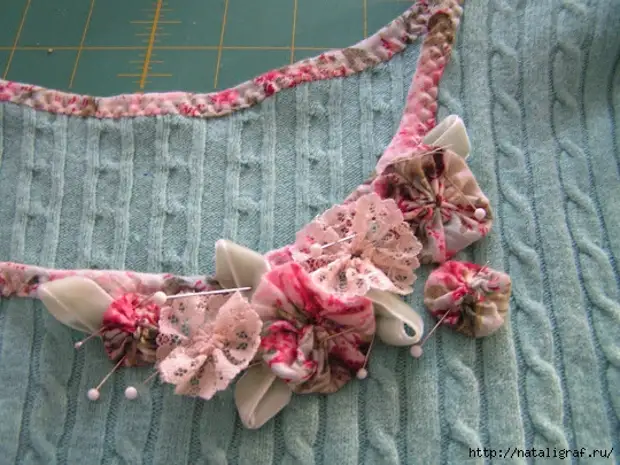
Decorating Yo-Yo Flowers from the same fabrics, lace and ribbons.
